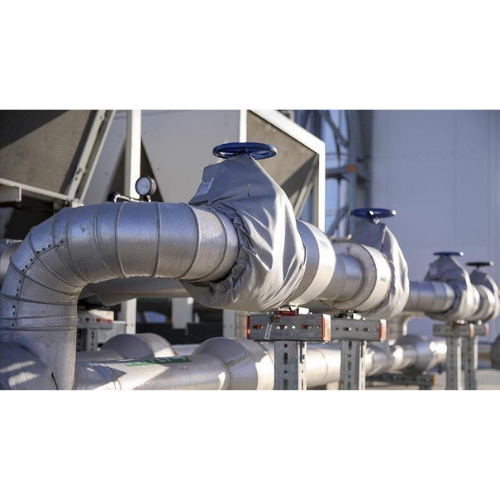Spain’s Gas Supply: Geopolitical Lifeline or Strategic Vulnerability?
Spain’s natural gas system has emerged as a critical node in Europe’s energy landscape, especially in the aftermath of the Russian invasion of Ukraine and the subsequent reshuffling of global energy alliances. With diversified supply routes, robust LNG infrastructure, and strategic geographic positioning, Spain is often hailed as a model. But beneath the surface lies a complex web of geopolitical dependencies, regulatory inefficiencies, and economic risks that warrant closer scrutiny
Spain’s Gas Infrastructure: Strengths and Capabilities
Spain boasts one of the most advanced gas infrastructures in Europe:
- Six major LNG terminals, including Barcelona, Cartagena, and Bilbao, capable of receiving and regasifying liquefied natural gas from around the world.
- Multiple interconnections with France and Portugal, allowing for cross-border energy flows.
- High underground storage capacity, ensuring buffer reserves during peak demand or supply disruptions.
- Diversified import sources, with gas arriving from Algeria, the United States, Nigeria, Qatar, and other global suppliers.
In 2024, Spain received gas from 14 different origins, positioning itself as a strategic entry point for LNG into Europe. The country also re-exported 34.5 TWh of natural gas to neighboring nations, reinforcing its role as a regional energy hub.
Geopolitical Context: From Russian Dependence to Global Diversification
The Russian Factor
Before 2022, Russia was a dominant supplier of natural gas to Europe. However, the war in Ukraine triggered a seismic shift in energy policy. The European Union imposed multiple sanctions on Russian energy exports, and member states scrambled to reduce their dependence.
Spain, with minimal reliance on Russian gas, was uniquely positioned to fill the gap. Its LNG terminals became vital for rerouting global supplies, and its infrastructure allowed for rapid adaptation to new geopolitical realities.
The Algerian Connection
Algeria remains one of Spain’s largest gas suppliers, primarily through the Medgaz pipeline. However, diplomatic tensions between Algeria and Morocco—and by extension, Spain—have complicated this relationship. In 2021, Algeria shut down the Maghreb-Europe pipeline, which passed through Morocco, citing political disputes.
While Medgaz continues to operate, the fragility of this bilateral relationship poses risks. Any escalation could disrupt supply and force Spain to rely more heavily on expensive LNG imports.
U.S. and Qatar: Strategic Allies or Market Opportunists?
The United States and Qatar have ramped up LNG exports to Europe, including Spain. While these nations offer reliable supply, their pricing is market-driven and subject to global demand fluctuations. Spain’s increasing reliance on spot-market LNG exposes it to price volatility, especially during geopolitical crises like the recent tensions in the Middle East and disruptions in the Suez Canal.

Regulatory Challenges and Economic Critique
Overinvestment and Underutilization
Despite its impressive infrastructure, Spain’s gas system suffers from chronic overinvestment. According to the Institute for Energy Economics and Financial Analysis (IEEFA), Spanish consumers are burdened with some of the highest gas bills in Europe, largely due to underutilized assets and guaranteed returns for infrastructure investors.
Enagás, Spain’s Transmission System Operator (TSO), continues to receive regulated profits regardless of actual demand. This model incentivizes expansion without accountability, leading to inefficiencies and economic strain on households and businesses.
Regulatory Reform: Too Little, Too Late?
In 2019, Spain introduced new regulations via the Comisión Nacional de los Mercados y la Competencia (CNMC). However, these reforms have failed to curb Enagás’ remuneration or address the systemic issues of overcapacity and misaligned incentives.
The upcoming regulatory framework for hydrogen integration, expected post-2026, may further complicate the landscape. While hydrogen offers long-term decarbonization potential, the technical and economic uncertainties surrounding its rollout could lead to additional financial burdens if not carefully managed.
Environmental Considerations: LNG vs. Decarbonization
Spain’s gas strategy is at odds with its climate goals. While LNG offers flexibility and diversification, it is still a fossil fuel with significant carbon emissions. The country has made strides in renewable energy, particularly solar and wind, but its continued investment in gas infrastructure risks locking in carbon-intensive assets.
Moreover, LNG terminals are increasingly used for bunkering operations, supplying fuel to maritime vessels. While this supports decarbonization in shipping, it also reinforces Spain’s role in fossil fuel logistics, potentially delaying the transition to cleaner alternatives.
Opportunities
- Regional Leadership: Spain can leverage its infrastructure to become a permanent energy gateway for Europe.
- Hydrogen Integration: If executed properly, hydrogen networks could complement gas infrastructure and support decarbonization.
- Energy Diplomacy: Strengthening ties with Algeria, the U.S., and Qatar could ensure long-term supply stability.
Risks
- Geopolitical Volatility: Diplomatic tensions with Algeria or global conflicts could disrupt supply chains.
- Environmental Backlash: Overreliance on LNG could undermine Spain’s climate commitments and attract criticism from environmental groups.
